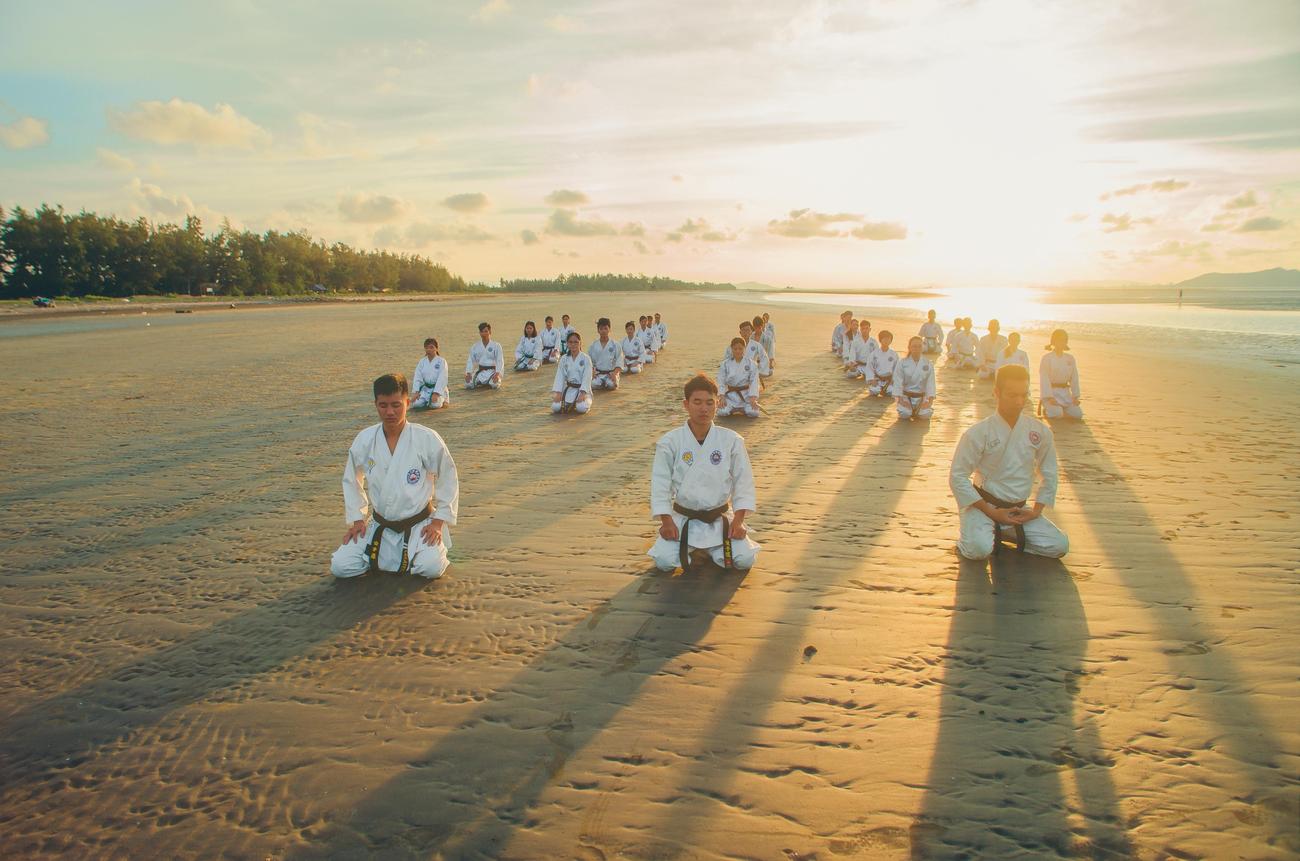In today’s fast-paced world, martial arts have emerged as more than just physical combat techniques. They have become a significant cultural phenomenon, captivating people from all walks of life. As an experienced journalist specializing in sports and cultural trends, I am thrilled to delve into the captivating realm of martial arts participation trends. In this thought-provoking article, I will unravel the intriguing patterns that define the ever-evolving landscape of martial arts. From the surge in participants to the influence of popular media, join me on a journey as we explore the captivating world of martial arts participation and its impact on our society.

Martial Arts Participation Trends
In the ever-evolving landscape of sports, martial arts has emerged as a formidable contender, captivating an increasing number of individuals. Let’s dive into the captivating world of martial arts and explore the fascinating trends behind its growing popularity.
The Rise of Martial Arts
Over the past decade, martial arts has experienced a remarkable surge in participation, captivating individuals from all walks of life. From youngsters seeking discipline and focus to adults searching for self-defense skills and fitness, the appeal of martial arts transcends age and gender.
In fact, between 2010 and 2021, the United States witnessed an impressive 23 percent increase in the total number of people practicing martial arts. This upward trend demonstrates the irresistible allure of this ancient art form in the modern era.
Gender Dynamics in Martial Arts
While martial arts may be perceived as a male-dominated domain, women have also found their place within its realm. Although men represent about 73 percent of overall martial arts studio membership, approximately 35-40 percent of martial arts participants are female, with the percentage varying depending on the specific discipline and location.
The growing presence of women in martial arts underscores the inclusive nature of this sport, offering empowerment and self-confidence to all who partake.
Exploring Market Growth
As martial arts captures the collective imagination, the industry’s market size has experienced substantial growth. From 2012 to 2023, the martial arts industry grew at an average rate of 18.7 percent, reaching an estimated value of $10 billion.
This significant market expansion is a testament to the increasing demand for martial arts and its wider acceptance by society.
Educational Background and Martial Arts
Education plays a pivotal role in the martial arts landscape, with a remarkable 69 percent of martial artists possessing at least a high school education. This statistic highlights the strong correlation between the pursuit of knowledge and the practice of martial arts.
The dedication to self-improvement and discipline intrinsic to martial arts attracts individuals seeking personal growth and development.
The Youthful Appeal of Martial Arts
Younger generations have fervently embraced martial arts, and this trend shows no signs of stagnation. The industry’s popularity among the youth reflects its ability to offer a diverse range of benefits, from physical fitness and self-defense skills to fostering mental strength and emotional well-being.
The expanding appeal of martial arts among young people indicates the profound impact it has on shaping the lives of the next generation.
Mixed Martial Arts – A Rising Phenomenon
Within the realm of martial arts, mixed martial arts (MMA) has emerged as a formidable force, captivating hearts and minds around the globe. MMA combines elements from various disciplines, creating a thrilling spectacle for both participants and spectators alike.
This growing demand for MMA has paved the way for increased competition and exposure, contributing to the continued evolution of martial arts as a whole.
The Global Reach of Martial Arts
While martial arts has gained significant popularity in the United States, its influence extends far beyond its borders. With an estimated global market size ranging from $4 to $5 billion annually, martial arts holds a prominent position in sports cultures worldwide.
The Stars of Martial Arts
Certain martial arts styles have achieved widespread recognition and immense popularity among practitioners. Karate, renowned for its striking techniques, remains the most popular martial art worldwide in terms of participation. It is closely followed by Taekwondo, celebrated for its high-flying kicks, and Judo, known for its powerful throws and grappling techniques.
These martial arts disciplines have become symbols of prowess and continue to inspire and capture the hearts of practitioners worldwide.
Martial Arts Studios – A Lucrative Venture
For passionate individuals considering a career in martial arts, opening a studio can be both rewarding and financially viable. On average, a martial arts studio generates annual revenue ranging from $130,000 to $160,000, depending on factors such as location and size.
The potential profitability of martial arts studios encourages entrepreneurship within the industry, fostering a vibrant and diverse community of practitioners.
Cultural Roots of Martial Arts
To truly understand the rise of martial arts, we must delve into its historical and cultural foundations. Asia, with its rich heritage and deep-rooted traditions, boasts the highest concentration of martial arts practitioners.
The influence of Asian culture permeates the martial arts landscape, shaping techniques, philosophies, and the overall essence of this captivating sport.
In conclusion, the trends in martial arts participation point towards a dynamic and ever-evolving landscape. From the increasing number of participants to the influential role of popular media and cultural exchange, martial arts continues to transcend boundaries and fascinate individuals globally.
As martial arts participation trends continue to expand, one thing remains certain: the captivating world of martial arts has the power to transform lives and leave an indelible mark on society.
Taekwondo is a martial art that has a rich history and continues to attract people from all walks of life. If you’re curious about the statistics of this dynamic sport, look no further. Our website provides comprehensive and up-to-date Taekwondo statistics for enthusiasts and athletes alike. Whether you want to know the average age of competitors or the percentage of successful kicks, we’ve got you covered. Don’t miss out on this opportunity to dive deep into the world of Taekwondo statistics. Click here to explore the intriguing numbers and facts: Taekwondo Statistics.

FAQ
Question 1: What is the current trend of martial arts participation in the United States?
Answer 1: The popularity of martial arts has steadily increased in the United States between 2010 and 2021, with a nearly 23 percent increase in the total number of people practicing this sport.
Question 2: Are men more likely to participate in martial arts compared to women?
Answer 2: Yes, men are slightly more likely to participate in martial arts than women, with men representing about 73 percent of overall martial arts studio membership.
Question 3: How fast is the martial arts industry growing?
Answer 3: The martial arts industry’s market size has grown at an average rate of 18.7 percent since 2012 and is expected to reach an estimated $10 billion by 2023.
Question 4: What is the educational background of most martial artists?
Answer 4: Approximately 69 percent of martial artists have a high school education or higher.
Question 5: Which martial art is the most popular worldwide?
Answer 5: Karate is considered the most popular martial art worldwide in terms of participation, followed closely by Taekwondo and Judo.
- China II Review: Delicious Food & Speedy Service - April 17, 2025
- Understand Virginia’s Flag: History & Debate - April 17, 2025
- Explore Long Island’s Map: Unique Regions & Insights - April 17, 2025
















